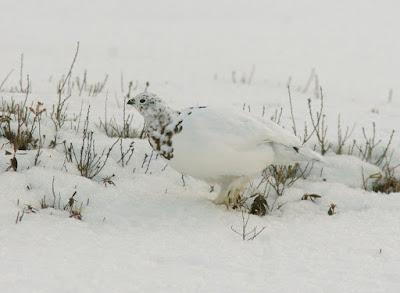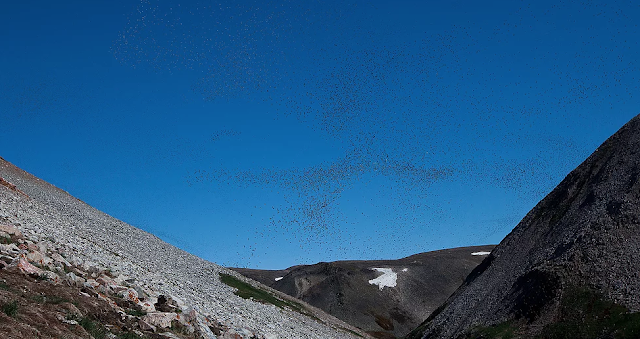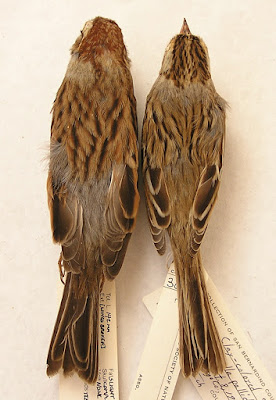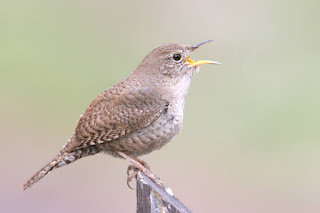Ptarmigan are plump birds, with short legs and small conical bills, which are perfect for cracking seeds or plucking berries from their barrenness habitat. All Ptarmigan belong to the genus Lagopus. This name is fittingly derived from the Greek lagos, meaning "hare" and pous meaning foot. This is in reference to the birds feathered legs and feet, which help them stay warm and gain purchase on their, rocky and often icy terrain.
Newfoundland is home to two species of Ptarmigan, Willow and Rock. Our Willow Ptarmigan is also known as Red Grouse in the UK. While neither species is particularly easy to find in Newfoundland, Willow has a much greater range and is by far the species you are most likely to encounter.
Range and Habitat
Willow Ptarmigan
Willow Ptarmigan are found throughout the province of Newfoundland, most often in coastal, rocky barren areas, where they are quite unlikely to encounter a Willow! Some of the best areas are on the Avalon Peninsula, on the barrens between Cappahayden and Portugal Cove South, Cape Race Rd, and the Cape Pine Road.
Willow Ptarmigan are known by several names locally and one of them is "patridge". While Willow Ptarmigan is not a correctly a patridge, part of it's diet certainly consists of the "patridge berries", (known internationally as ligonberry) which grow in dense patches on the subarctic barrens of coastal Newfoundland. The windswept coastal barrens on the Avalon Peninsula will often have exposed patches of these berries, even in winter and if they are snow covered the Willow Ptarmigan have a solution for that as well- they simply dig through the snow to reach them!
Of course, Willow Ptarmigan also make use of a variety of seeds and insects as well, in the warmer months. I have seen Willow Ptarmigan feeding on the seeds from exposed branches of Alder bushes sticking up through the snow on several occasions.
Rock Ptarmigan
As for the much less common Rock Ptarmigan, their range is much more restricted in the province, primarily due to their apparent association with high altitudes. If you want to see a Rock Ptarmigan in Newfoundland, there are few choices as far as locations, and none of them are easy to get to! The way pretty much everyone in Newfoundland see's their Rock Ptarmigan is by climbing Gros Morne Mountain. The summit is about 800 meters and the hike takes a 5+ hours at least. At the top, you may or may not be rewarded a with Rock Ptarmigan, that is the chance you take! It would appear that Rock Ptarmigan stay true their name, their habitat is very rocky, add that's putting it lightly!
 |
| Gros Morne Mountain, Newfoundland |
Identification
Identifying Willow and Rock Ptarmigan in Newfoundland is actually quite easy, since the two almost never overlap. It is worth noting though, that both species change their appearance seasonally, to provide better camouflage against their surrounding environments. I will include a series of photos of both species below that will highlight some of the identifying features, differences and seasonally changes that both species undergo.
 |
| Rock Ptarmigan (male). Note the colour of the neck and breast especially and compare to the birds above, Rock Ptarmigan is much colder in appearance. |
 |
| Rock Ptarmigan (male) part way through it's moult to winter plumage. When completed the bird will be totally white, except for the dark lores, red comb and black tail. Photo: Alvan Buckley |
 |
| Another shot of a moulting male Rock Ptarmigan, you can get a sense of the elevation in the background Photo: Alvan Buckley |
 |
| A completely white individual. Note that it lacks the dark lores shown by Rock Ptarmigan in similar plumage. Also note the relatively thick bill (for a Ptarmigan) which is evident even in this photo. |
 |
| Rock Ptarmigan (male) winter plumage, note the black lores and thinner bill than seen in Willow Ptarmigan Photo: https://www.coniferousforest.com/rock-ptarmigan.htm |
I will conclude with a couple of close shots allowing comparison of the bills of both Willow and Rock Ptarmigan. Note the thicker bill of Willow Ptarmigan.
 |
| Willow Ptarmigan on left and Rock Ptarmigan on right. Note how much thicker the bill of Willow Ptarmigan is than the Rock Ptarmigan on the right. |
If you enjoyed this article you might also enjoy some of the other 120+ articles on the Birding Newfoundland Blog. Some of the latest articles include.
(select blog archive in pages, to see all previous articles)
I am thrilled to be able to provide educational and entertaining content. However, these articles are very time consuming to write. If possible, please consider subscribing to the blog with a very small monthly fee via the subscribe button. This will help to cover costs of website maintenance and all the other expenses that go into producing the content. Whether you subscribe or not, you will still have access to all the content, the small subscription fee is just a means of showing your support. Thank you!


































